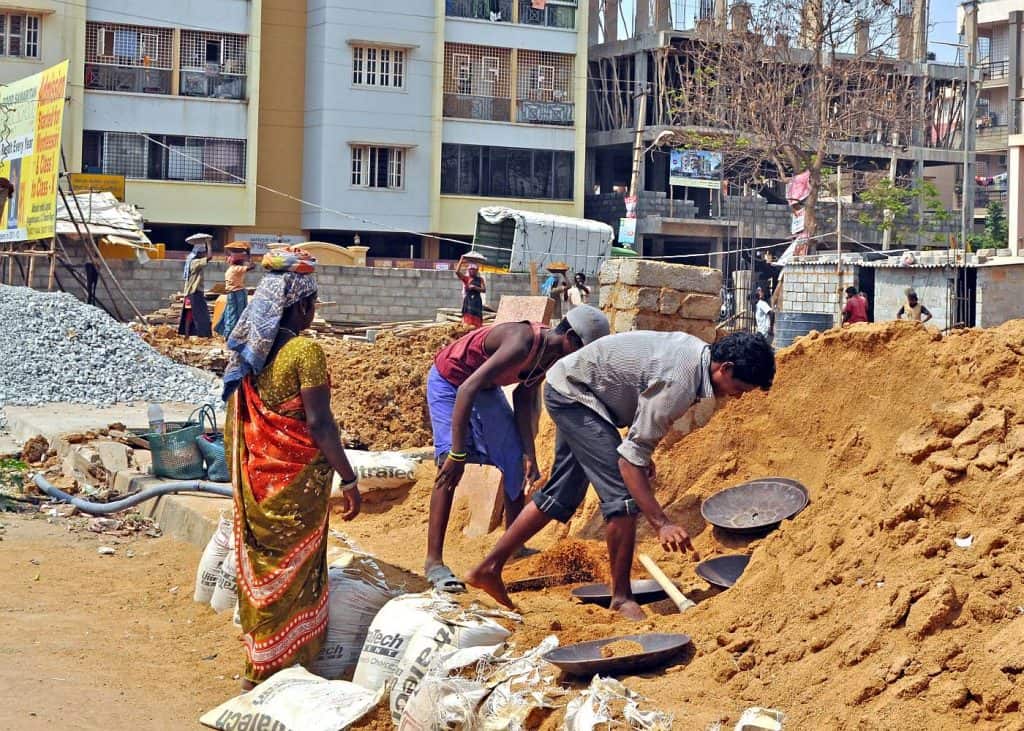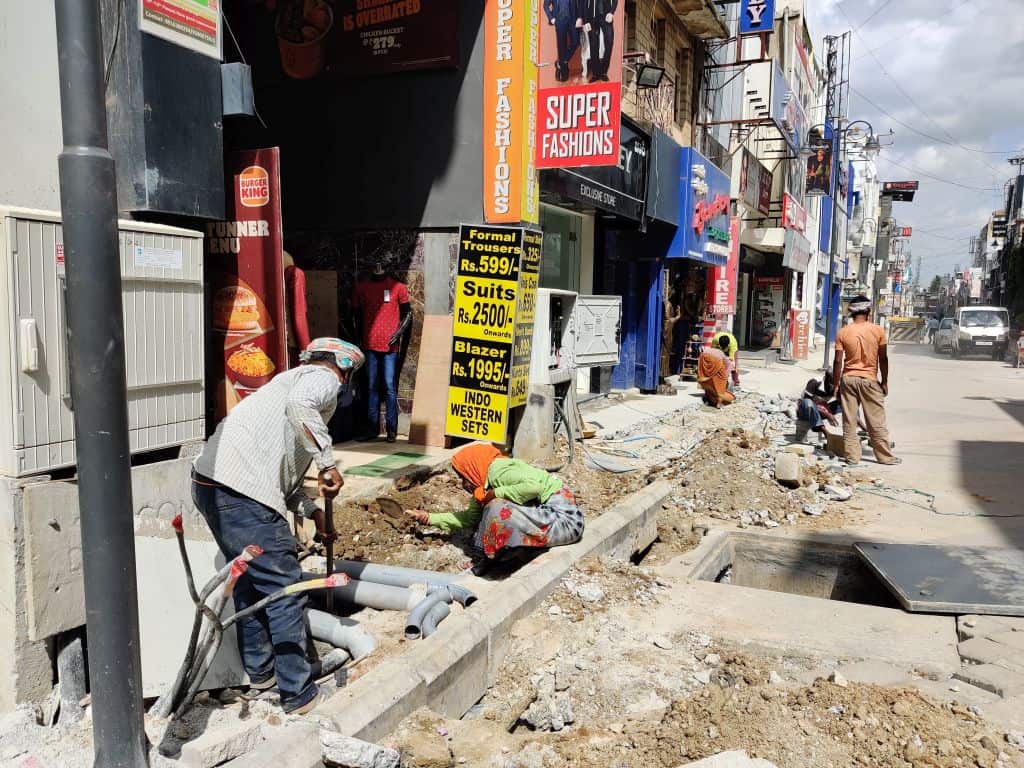One way to be aware of issues of impropriety and poor performance in local government bodies and departments is to track the audit reports from agencies like the Comptroller and Auditor General of India (CAG).
This article is the fifth in the Series: Understanding Public Project Audits, by experts from Indian Accounts and Audit Service.
Long lines of migrant workers, many of them from the construction sector, on the highways and outside railway stations during the COVID- 19 lockdown are not so distant and unpleasant memories for most of us. This vulnerable section of the population was literally trapped between the devil and the deep blue sea – the loss of work/wages on the one hand and the inability to return to their homes on the other.
But the adversities faced by the construction labour force are not restricted to pandemic times alone. This workforce segment has for long suffered from multiple disadvantages such as low pay, high risk and lack of medical and social security system.
The Karnataka Building and Other Construction Workers Welfare Board was set up in 2007 in recognition of the need to provide specific welfare measures for these workers. The objective was to use the funds generated through imposition of a 1% cess on cost of construction to provide welfare benefits to construction workers.
However, several years down the line, there has been little change in the sorry plight of construction workers. While the funds available at the Board’s disposal have shown a healthy growth in view of the construction boom, its footprint in terms of welfare activities has been rather stunted. Despite being cash rich with a corpus of Rs. 7151.26 crore as of March 2019, the Board has failed to fulfill its mandate.
The Office of Principal Accountant General (Audit I) conducted a comprehensive audit of the Board’s functioning during the period April 2014 to March 2019 to assess:
- Whether the Board achieved the goals of extending welfare measures to construction workers effectively through implementation of schemes and creation of infrastructure;
- Whether the internal control mechanism and human resource management were adequate to support the effective and economic utilisation of the cess collected.

Read more: Women construction workers face serious health and safety hazards at work and beyond
The audit examined the records at the central office of the Board, four out of 11 offices of Assistant Labour Commissioners (ALCs) and six out of 16 district level offices. A beneficiary survey was conducted to assess the impact of the Board’s activities on construction workers. Some of the important observations were:
- Between April 2014 and March 2019, the Board’s receipts amounted to Rs 5,452.60 crore. However, only Rs 420.72 Crore (7.7%) was utilised for the implementation of welfare schemes.
- The Act stipulates that at least 95% of the funds should be utilised for the benefit of construction workers and administrative expenses should not exceed more than 5% of the total expenses in a year. However, it was noticed that administrative expenses ranged between 9% and 72% of total expenses during the audit period.
- Hardly any effort was made to generate awareness about newly introduced schemes. A beneficiary survey was conducted among 286 out of 1,136 workers at 30 construction sites in six districts jointly with labour department officials to assess the extent of registration and awareness among construction workers. The survey showed that only 27% were registered in Karnataka and just 2% were registered in other states. The balance i.e 71% were not registered and attributed this to lack of awareness, lengthy procedure, delays in approval, etc. Only 20% workers were aware about welfare schemes and 8% registered workers reported to have availed benefits under the Act.
- Benefits were extended to 3.64 lakh workers, which was just 3% to 8% of total registered workers. Assistance under ‘Marriage’ and ‘Education’ schemes accounted for 82% of total scheme expenditure whereas the share of schemes like pension, accident benefits, maternity and hospitalisation etc varied from 0.35% to 9%.

No data, no awareness outreach
- The poor utilisation of funds was attributable to many factors. One of the critical lapses noticed was that the Board had not conducted any survey or devise any other system to estimate the number of eligible beneficiaries and build a database that would aid in decision making. Further, the Board did not have details of the number of registered workers, renewal of registration, number of applications received and benefits disbursed under each scheme.
- Despite having an ‘Expert Committee’ for framing statutory rules, there were inconsistencies/ restrictive clauses which were detrimental to the interests of construction workers. In the case of the Thayi Lakshmi Bond scheme where assistance is provided to a registered female worker for the delivery of a child, an amendment was made to provide assistance in the form of a bond for a minimum period of three years instead of cash payment to the beneficiary’s account. The justification was unacceptable as it did not serve any purpose and defeated the intent of the scheme.
- Though a time-limit was prescribed for submitting applications, no time limit was prescribed for sanctioning claims. Delays in sanctioning claims ranged from 33 months at the selected districts to 78 months at Board level.
Read more: Stuck between govt, builders and contractors, workers court hunger and destitution
- In the case of assistance for education, the Board amended the rules to restrict educational assistance to students enrolled in regular courses in recognised institutions located physically in Karnataka. As a result, despite funds not being a constraint, students enrolled in distance courses, home study courses, online courses etc. were not eligible. The Board cited widening of educational assistance as the reason for this amendment. This explanation was not convincing since it resulted in restricting the scope of assistance and was especially detrimental to the interests of the migratory population.
- Persistent failure to obtain exemption under IT Act, 1961, resulted in avoidable tax liability aggregating Rs 2,358.94 crore for FYs 2011-12 to 2017-18. Funds to this extent could therefore not be used for the purpose they were meant for.
- The institutional mechanisms were weak – non-constitution of State Advisory Committee, delays in framing Cadre & Recruitment Rules, 36% vacancy in cadres of ALCs/LOs, absence of Internal Audit and Grievance Redressal Mechanism. This had an adverse impact on the registration of establishments/workers and led to inordinate delays in sanctioning of claims.
- Despite incurring Rs 1.66 crore for developing a software for registration/renewal etc, the Board did not have a software for providing better services to workers and monitoring fund utilisation.
The state government acknowledged the findings and accepted the recommendations such as a special drive to register unregistered workers through linking with Ration Cards, Jan Dhan Yojana, State RERA data etc.
The Audit Report which was placed at the state legislature on December 9, 2020 can be accessed here.
[The authors are from the Indian Audit and Accounts Service. Views are personal.]